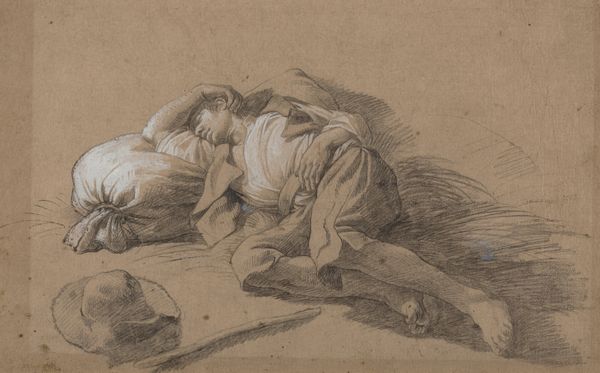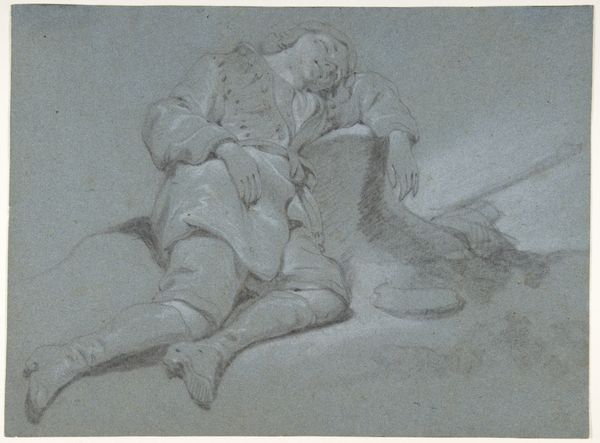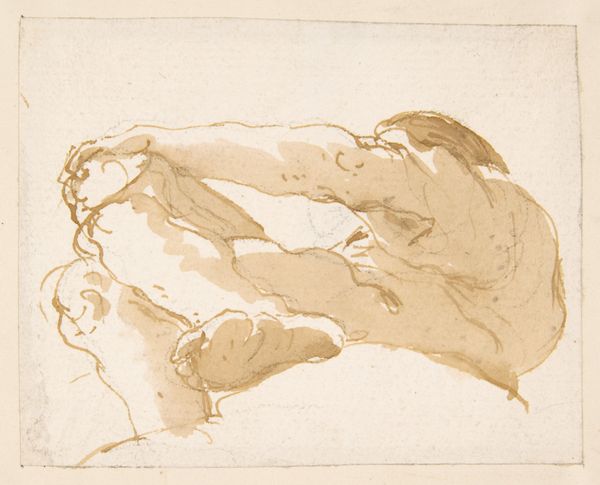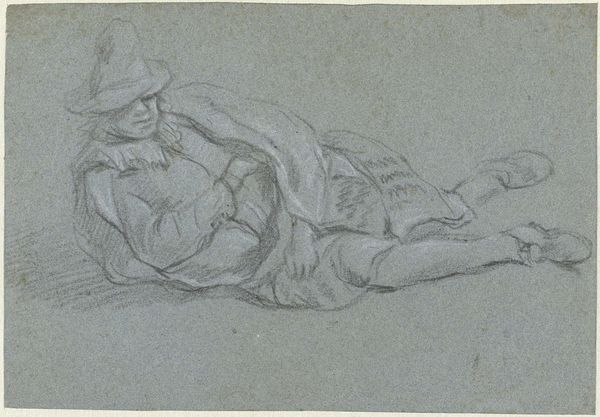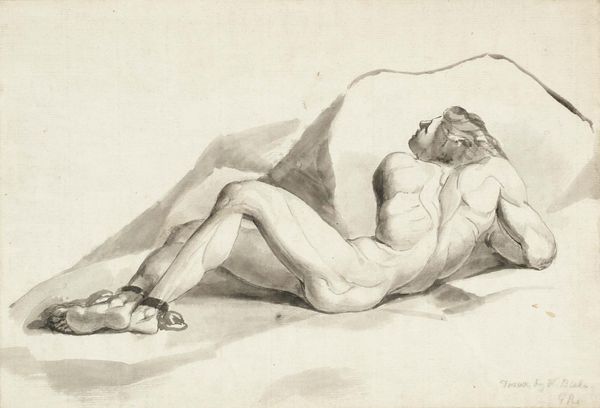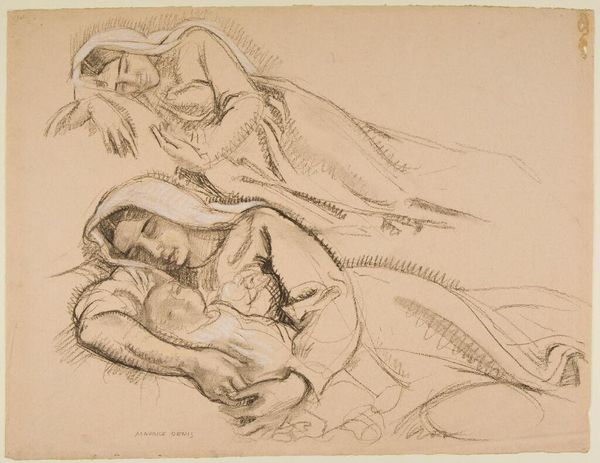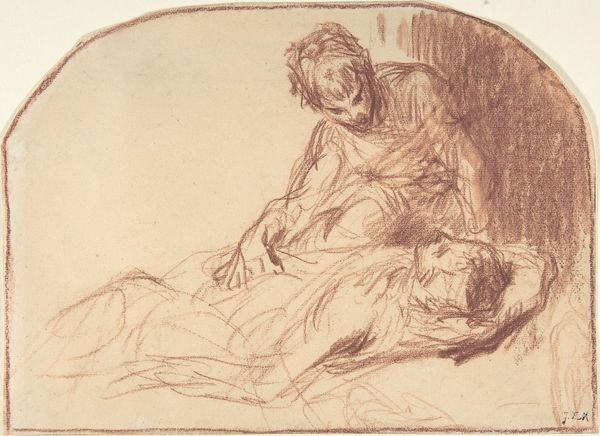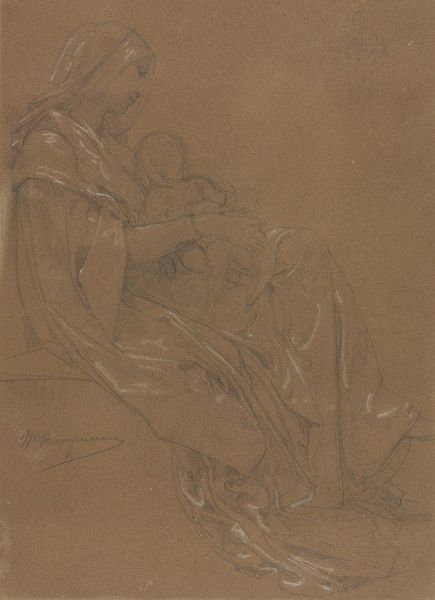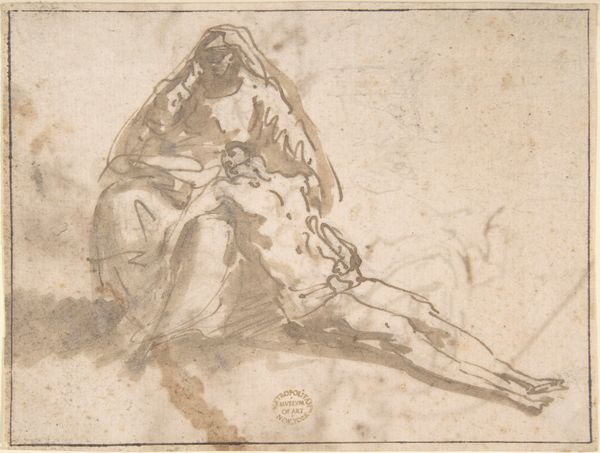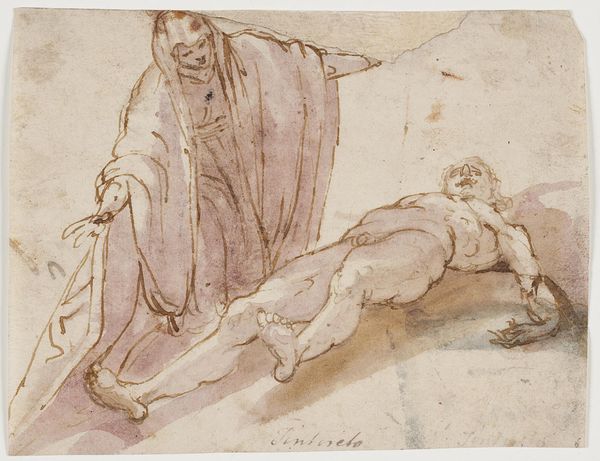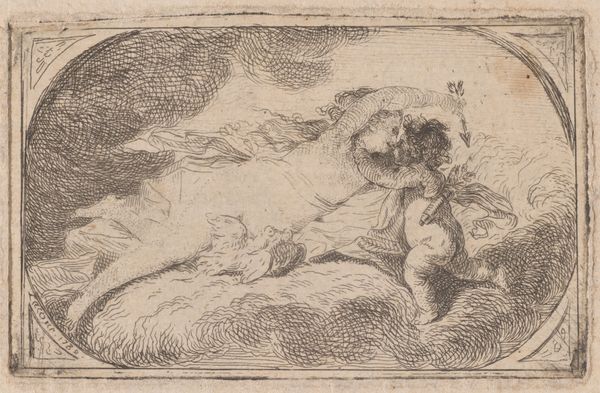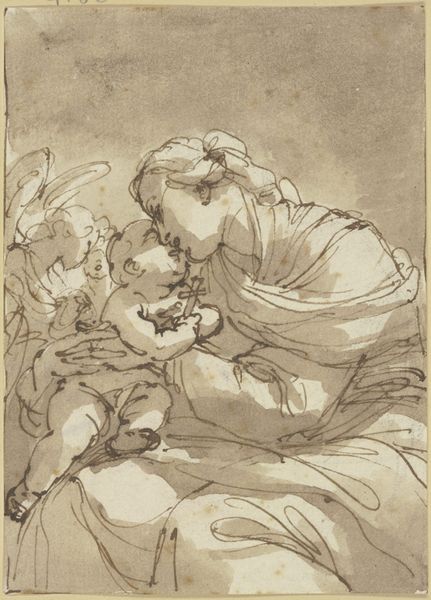
drawing, charcoal
#
drawing
#
landscape
#
charcoal drawing
#
figuration
#
oil painting
#
romanticism
#
charcoal
Copyright: Public Domain: Artvee
Théodore Géricault created this ink wash drawing, "Man Clutching a Horse in Water, after Poussin’s 'Deluge'" during a period marked by political upheaval and social change in post-revolutionary France. Géricault’s art often grapples with themes of human suffering, and here, the survivor’s embrace speaks to the desperation and vulnerability experienced during times of crisis. The source material, Poussin's "Deluge," illustrates a biblical catastrophe, yet Géricault's interpretation brings forth more intimate and immediate feelings of despair. We might consider how class and social status influence who survives and who perishes in such events. The man's turban might indicate a specific cultural or social identity and the horse perhaps stands as a symbol of power and status, now rendered helpless. Géricault seems to ask: In the face of overwhelming disaster, what does it mean to lose not only life, but also identity and status? The drawing becomes a poignant reflection on the fragility of human existence and the shared vulnerability that unites us all.
Comments
No comments
Be the first to comment and join the conversation on the ultimate creative platform.
